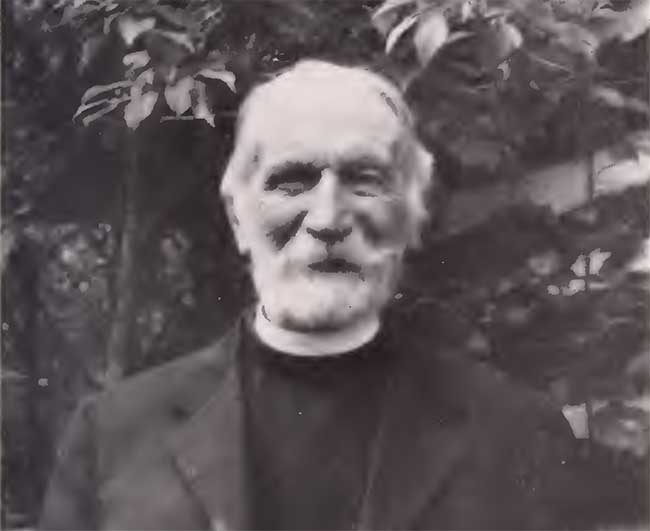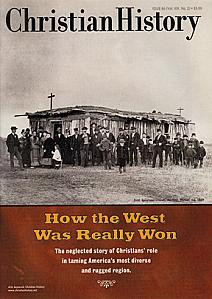FEARLESS JOHN ROBERTS PIONEERED FOR THE CHURCH IN WYOMING

[ABOVE: John Roberts, age 91, frontpiece from Winfred H. Ziegler's Wyoming Indians. Laramie, Wyoming, c.1945.]
REV. JOHN ROBERTS was a tough priest, not to be cowed by anyone or anything. In 1883, the winter he arrived in Wyoming to work as an Episcopal priest among the Shoshone and Arapahoe Indians, the temperature plunged sixty degrees below zero and several travelers and stage drivers died or lost limbs to frostbite. Undeterred, Roberts traveled with a mail carrier for eight days through the intense cold and snow to reach the location to which his bishop had assigned him.
Welsh-born, Roberts had already served in the Bahamas and in Colorado before coming to Wyoming. During a smallpox outbreak at Pueblo, he showed his courage, working in the infirmary. When Robert's apprenticeship was done, Bishop Spalding appointed the thirty-year-old priest to the Shoshone and Bannock Indian Agency in Wyoming Territory (later renamed the Wind River Indian Reservation). There he worked himself relentlessly to establish churches and conduct baptisms, weddings, and funerals. He buried a woman he was convinced was Sacajawea, famed for accompanying the Lewis and Clark expedition of 1803–1806. He also preached at the burial of Chief Washakie in 1900. Much of Robert’s work was educational, however, and he taught at the government school and opened a girls’ school.
He worked almost until his death at ninety-six-years of age on this day, 22 January 1949. In that time, he never lost his boldness. In 1885, when Chief Washakie’s son became intoxicated and was killed when he would not leave a tavern, Washakie threatened retaliation against whites. Roberts went over and talked with him, winning a life-long friend. According to Sarah Emilia Olden, who interviewed Roberts, the missionary offered his life in exchange for Washakie’s son, so impressing the Indian chief that he was baptized that night. However, Robert’s family disputed the account, saying that Washakie’s response was “The white man did not kill my son. Whiskey killed him.” However, Washakie did grant lands to the Episcopal mission and received baptism around that time.
Another time, rather than allow a man to bleed to death because of the butcher work of a quack surgeon, Roberts drove two half-tamed broncos through the dark and cold sixteen miles to the nearest garrison to fetch a military doctor. The man’s life was saved—just barely.
In his desire to preserve Native American culture, Roberts worked with Michael White Hawk to translate parts of the Bible into Arapahoe. Luke 9:25–26 in that translation reads, Hauddusedau henane, vahesedanauaugu hathâauauvadenee, nau hanahadagu, nauwauâthe hausâ guthadaguâ Daun naudauthedaunâde nau nadanadedaunau, nananenith Heau Henane haudnaudauthedaunaunith, hâenauusathe nehayau hadauvasâthanith, nau Henesaunaune hadauvasâthanith, nau vadanee hautheaunauau hadauvasâthanethe. (For what does it profit a man if he gains the whole world, and loses or forfeits his own self? For whoever will be ashamed of me and of my words, of him will the Son of Man be ashamed, when he comes in his glory, and the glory of the Father, and of the holy angels. NOTE I had to substitute circumflex "a" for "a" with a macron as our website would not permit the macron.)
In Robert’s later years, a congressional commission stated: “He has done more toward advancing these Indians in education, farming, and mechanical pursuits than all other agencies combined.” Before his death, Roberts became blind. Married on Christmas Day, 1884, Roberts and his wife Laura Brown raised five children.
—Dan Graves
- - - - -
For more about the Christianizing of America's western frontier, read CH #66, How the West Was Really Won






